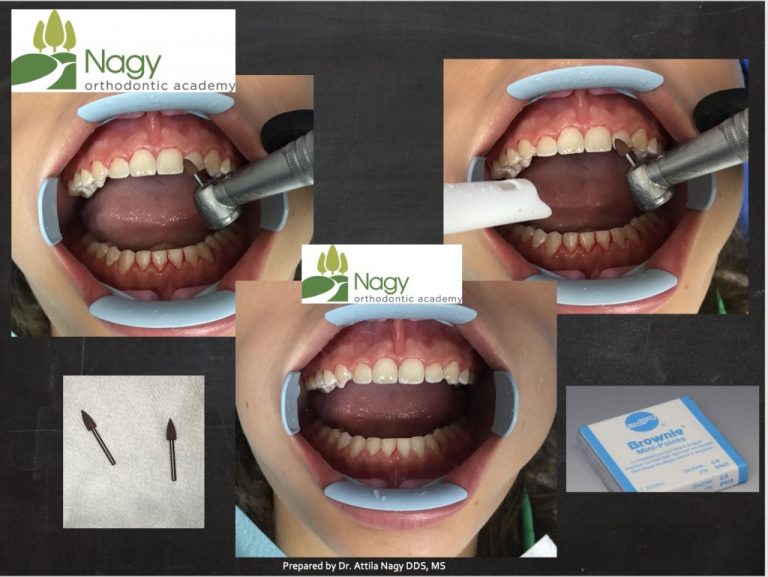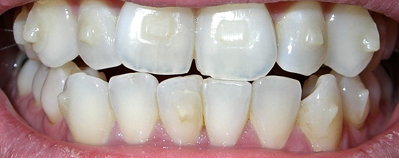What is the right age for braces
If you have a child’s smile that needs to be perfected, you may be wondering when is the right age for braces. It’s an important question as there are many factors involved in determining the best time for braces treatment. From young children with baby teeth to teenagers and adults who need orthodontic adjustments, considering the type of correction required and the timing of treatment can make a big difference in achieving the desired results. So, What Is the Right Age for Braces? In this document, we will explore the answers to this question and provide tips for parents and individuals seeking orthodontic treatment. Read on to discover more about what age group is suitable for braces so your family can get the most out of their orthodontic care!
The Importance of Early Orthodontic Treatment
Early orthodontic treatment can provide many benefits to improving your child’s smile. Some children may exhibit issues with their jaw development, teeth spacing, or alignment as they grow. Identifying these concerns before the age of 7 can help prevent more severe cases in the future. Early intervention can also lead to a shorter and less complicated treatment plan in the long run. For example, if your child’s teeth are not aligned properly, they may be more prone to cavities and gum disease. Additionally, correcting these issues early on can improve speech development and prevent problems with biting and chewing.
Age 7: Is The Right Age For Braces?
According to the American Association of Orthodontists, age 7 is a crucial time for orthodontic evaluations. This is when most children have a mix of baby and permanent teeth, allowing orthodontists to assess their dental health and determine if any intervention is needed. While braces are not always necessary at this age, it is vital to have a professional evaluation to monitor the development of your child’s teeth. Early detection of any issues can lead to successful and timely treatment.
Teenage Years: A Common Time for Braces
While some children may need braces at an earlier age, the teenage years are also a standard time for orthodontic correction. This is because most permanent teeth have erupted, and the jaw has stopped growing. This allows for more precise treatment and quicker results. Additionally, many teenagers are self-conscious about their appearance, so fixing issues like crooked teeth or gaps can boost their confidence.
Adult Treatment: It’s Never Too Late
With advancements in orthodontic technology, there is always time to get braces. Many adults are now seeking orthodontic treatment to improve their oral health and enhance their smile. Whether it’s for functional or cosmetic reasons, there is no age limit for braces. In fact, about 20% of orthodontic patients are adults! With options like clear aligners, ceramic braces, and lingual braces, adults can straighten their teeth without feeling self-conscious.
Common dental problems requiring braces
As mentioned earlier, various factors determine the need for braces. Some of the most common dental problems that may require orthodontic treatment include overcrowding, crossbite, overbite, underbite, and gaps between teeth. These issues can not only affect your appearance but also impact your oral health in the long run. Thus, it’s essential to address them early on to prevent further complications.
Overcrowding
Overcrowding occurs when there is not enough space in the mouth for all the teeth to fit correctly. This can lead to crooked or overlapping teeth, making it difficult to clean them effectively. Overcrowded teeth are more prone to cavities and gum disease, so correcting this issue with braces can improve oral health.
Crossbite
Crossbite is when the upper and lower teeth do not align correctly, causing some of the upper teeth to sit inside the lower teeth. This can lead to uneven wear on the teeth, jaw misalignment, and difficulty chewing. Braces can help correct these issues and prevent further complications.
Misaligned teeth
Teeth that are not appropriately aligned can affect both appearance and functionality. They may cause problems with biting and chewing, speech development, and self-confidence. Braces can straighten misaligned teeth and improve oral health.
Overbites and underbites
Overbites and underbites occur when the upper or lower teeth protrude too far forward or backward, respectively. This can lead to jaw pain, difficulty chewing, and tooth damage. Braces can help correct these conditions and prevent further complications.
Gaps between teeth
Gaps between teeth can be caused by genetics, missing teeth, thumb-sucking, or gum disease. While some people may embrace their unique gap-toothed smile, significant gaps can cause issues with speech and chewing. Braces can close these gaps and improve oral health.
Impact of untreated orthodontic issues
If left untreated, orthodontic issues can have a significant impact on not only oral health but also well-being. Crooked teeth or misaligned jaws can lead to difficulty eating and speaking, as well as low self-esteem and confidence. These issues may also cause jaw pain, headaches, and even sleep apnea. Therefore, seeking treatment for orthodontic problems is crucial for maintaining good oral health and overall quality of life.
Orthodontic treatment options for children and adults
There are various orthodontic treatment options available for both children and adults, depending on their individual needs and preferences. Traditional metal braces are still a popular option for correcting severe issues, while newer options like clear aligners provide a more discreet and comfortable treatment experience. Lingual braces, which are placed on the back of the teeth, can also be an inconspicuous option for adults. Additionally, ceramic braces offer a more aesthetically pleasing alternative to traditional metal braces.
Typical age range for braces in adolescents
The typical age range for braces in adolescents is between 11 and 15 years old. But, every child’s orthodontic needs are unique, so some may need treatment at an earlier or later age. It’s essential to have regular dental checkups starting at a young age to check the development of permanent teeth and address any potential issues early on.
Importance of timing during puberty
Timing is crucial during puberty because this is when most children experience significant growth and development of their jaws and permanent teeth. Taking advantage of this growth spurt can make orthodontic treatment more effective and efficient, resulting in a shorter overall treatment time.
Adolescents’ experiences with braces
While some adolescents may feel self-conscious about wearing braces, many also embrace them as a rite of passage and a way to improve their smile. Braces come in various colors and styles, allowing adolescents to express themselves and have fun with their treatment. With the advancements in orthodontic technology, braces are now more comfortable and less noticeable than ever before.
Challenges
Some challenges that adolescents may face while wearing braces include adjusting to new oral hygiene habits, avoiding certain foods, and dealing with occasional discomfort. But these challenges are temporary and well worth the long-term benefits of a healthy and beautiful smile.
Benefits
Aside from the obvious aesthetic benefits, there are many other advantages of braces for adolescents. These include improved oral health, better chewing and speech, increased confidence and self-esteem, and potentially avoiding more extensive and costly treatments in the future.
Social considerations
While some adolescents may feel self-conscious about wearing braces, others may see it as a fashionable accessory or a way to stand out. Additionally, many schools and organizations have programs in place to help students with orthodontic treatment costs, making it more accessible for families.
Tips for managing braces during adolescence
Managing braces during adolescence may seem overwhelming, but here are some tips to make the experience more manageable:
- Follow proper oral hygiene habits and regularly brush and floss to maintain healthy teeth and gums.
- Avoid sticky or hard foods that could damage braces or get stuck in them.
- Attend regular orthodontic appointments for adjustments and checkups.
- Communicate with the orthodontist about any discomfort or concerns.
- Embrace braces as a way to improve your smile and boost confidence. Remember, it’s only temporary, and the result will be worth it!
Shifting trends in adult orthodontics
Orthodontic treatment is no longer for children and adolescents. In recent years, there has been a significant increase in the number of adults seeking orthodontic treatment. This trend is driven by advancements in technology, such as clear aligners, which offer a more discreet and convenient option for busy adults.
Benefits of adult orthodontics
There are many benefits to adult orthodontic treatment, including improved oral health, better digestion and nutrition, increased self-confidence and career opportunities, and a more youthful appearance. It’s always possible to achieve the healthy and beautiful smile you’ve always wanted!
Reasons why adults may need braces
Adults may need orthodontic treatment for various reasons, including:
- Crooked or crowded teeth
- Misaligned bite
- Jaw pain or discomfort
- Difficulty properly cleaning teeth due to misalignment
- The desire for a more aesthetically pleasing smile
It’s essential to consult with an orthodontist to determine the best treatment plan and options for your specific needs. Don’t let age hold you back from achieving the smile of your dreams!
The role of an orthodontist in adolescent and adult treatment
Orthodontists play a crucial role in both adolescent and adult orthodontic treatment. They are specially trained to diagnose, prevent, and treat dental and facial irregularities, including misaligned teeth and jaws. Orthodontists use various techniques and appliances, such as
- braces
- clear aligners
- retainers
- and other devices
It helps patients achieve a healthy and beautiful smile. They also check patients’ progress, make necessary adjustments, and provide guidance and support throughout the treatment process.
Emotional readiness for orthodontic treatment
While braces and clear aligners can improve oral health and appearance, it’s also crucial to consider the emotional readiness of the patient, especially adolescents. Orthodontic treatment may come with challenges that need patience, dedication, and a positive attitude. It’s essential to prepare mentally and emotionally for the journey towards a healthier smile.
The Right Age for Braces: Case-by-Case Approach
There is no one “right” age for braces – every individual’s orthodontic treatment plan is unique. The American Association of Orthodontists recommends children have an orthodontic evaluation by the age of 7. This is when potential issues can be identified and addressed early on. However, adults can also benefit from orthodontic treatment at any age. It’s never too late to achieve a healthy and confident smile. The decision should be made based on the individual’s specific needs and in consultation with an orthodontist.
Conclusion
As you can see, there is no one-size-fits-all answer to the question of what age is the right age for braces. The ideal time may depend on your child as well as the complexity of their case. It’s essential to consult a professional orthodontist. Having your child evaluated by an orthodontist as soon as possible gives you access to more options and allows for early intervention before more serious problems arise. So, if you’re concerned about your child’s teeth or bite alignment, don’t hesitate. Speak with an orthodontist today to see what options are available and start planning your little one’s smile makeover!
Addition article Resources:


